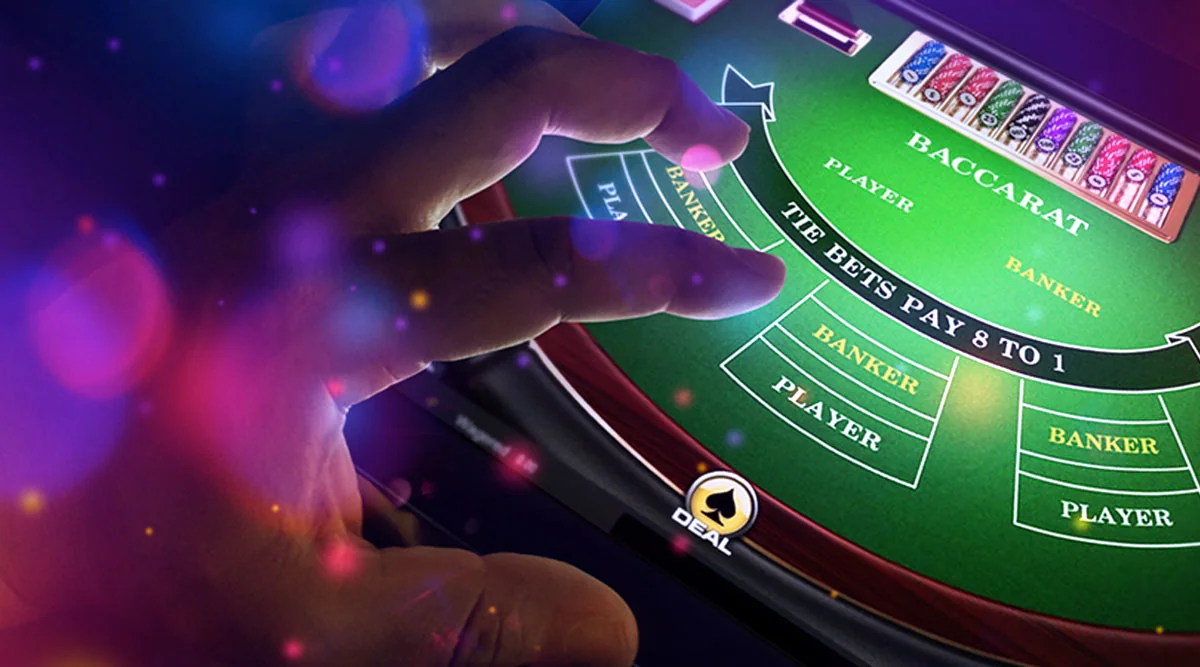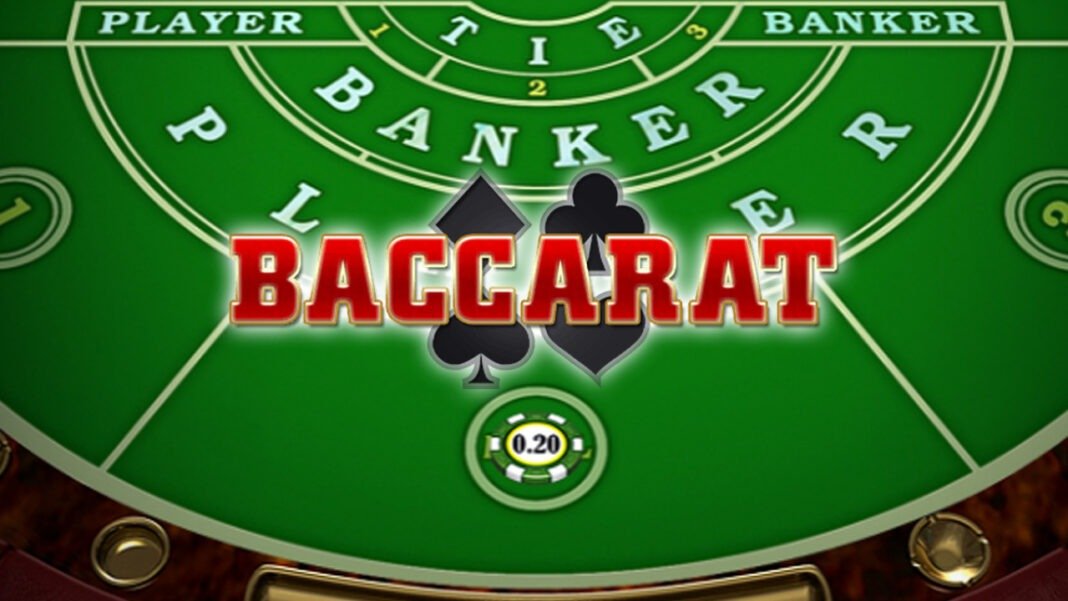The Baccarat Table — Anatomy, Etiquette, and Online Evolution
There’s something quietly commanding about a baccarat table. It’s not loud. It doesn’t flash. But in every major casino, it holds a gravity of its own—surrounded by velvet ropes, soft lighting, and the kind of players who don’t blink at five-figure bets.
Baccarat, born in Italy and polished in French salons, has always had an air of exclusivity. While games like blackjack shout and roulette spins, baccarat remains composed—still, silent, and precise. No banter. No drama. Just ritual and rhythm.
And yet, it’s not just a game for the tuxedo crowd anymore. The rise of baccarat in the online space has cracked open the doors. Now, whether you’re sitting in Monaco or logging in from your kitchen, you can play game baccarat online with live dealers and real stakes. And yes, the elegance still lingers—even if you’re in sweatpants.
What hasn’t changed? The table. Whether real or digital, the layout remains faithful. It’s not just felt and chips. It’s a stage. And once you understand it, you’ll see why the game pulls people in—and keeps them coming back.

The Layout of a Baccarat Table: Understanding the Design
Every detail on the baccarat table exists for a reason. From the curve of the felt to the placement of the chips, it’s all designed to channel the flow of the game without noise or confusion. Simplicity is key.
There are two primary styles: Big Table Baccarat, usually reserved for high rollers, and Mini Baccarat, which you’ll find more often on the main casino floor or in live online rooms. Both play by the same rules, but their setups vary.
Big Table Baccarat can accommodate up to 14 players, with three dealers: two handling bets and one controlling the shoe (that’s the card dispenser). Players can also take turns dealing, a nod to baccarat’s European roots.
Mini Baccarat is more compact. One dealer manages everything—dealing cards, handling chips, and overseeing bets. You’ll usually see 7 to 9 betting spots.
Here’s how the layout breaks down:
| Section | Description |
| Player Area | Where players sit and place bets |
| Dealer Area | Manages the cards and the shoe |
| Bet Boxes | Marked areas for Player / Banker / Tie |
| Scorecards | Used to track trends like ‘Big Road’ |
| Commission Box | Records 5% commission from Banker wins |
Each element exists to keep the game moving smoothly. No clutter. No wasted space. Just structure.

How to Play Baccarat at the Table: Step-by-Step
Despite the mystique, baccarat isn’t complex. In fact, it’s one of the simplest games on the floor. The drama isn’t in the rules—it’s in the tension of each draw.
Step 1: Placing Bets
Before cards are dealt, players bet on one of three outcomes: Player win, Banker win, or a Tie.
Step 2: Dealing Cards
Two cards go to the Player hand, two to the Banker. The dealer handles this in Mini Baccarat; players may deal in the Big Table version.
Step 3: Applying Drawing Rules
If either side gets 8 or 9, that’s a “natural”—game over. If not, a third card may be drawn, but only under specific rules. No one makes decisions here; it’s all automatic, governed by a fixed matrix.
Step 4: Payouts and Commission
Winning Player bets pay 1:1. Banker wins also pay 1:1, but the house takes a 5% cut—tracked in that little commission box. Tie bets pay 8:1 or 9:1, depending on house rules.
Hand Values Matter:
- 10, J, Q, K = 0 points
- Ace = 1 point
- 2–9 = face value
- Only the last digit counts: a hand of 7 + 8 = 15, counted as 5
“The baccarat table isn’t just a piece of felt — it’s a theater stage where psychology, tradition, and mathematics unfold in silence.” – Jean-Louis Michaud, Casino Historian

Baccarat Table Etiquette: Do’s and Don’ts
Walk up to a baccarat table, and you’ll notice it’s quiet. Almost reverent. Players don’t fidget. Dealers don’t speak unless they must. There’s a kind of unspoken code, and breaking it makes you stand out—for the wrong reasons.
Dress the part. At high-stakes tables, the attire is often formal. Even online, live dealers wear tuxedos. It’s part of the game’s DNA.
Don’t touch the cards. Unless you’re at a Big Table game where players are allowed, cards are sacred territory. Same goes for chips once bets are placed—hands off.
Tipping? It’s expected at physical tables, especially after big wins. Not mandatory, but always appreciated. In online rooms, some platforms allow tipping the live dealer digitally.
Hand signals help communicate your bet choice clearly without speech. Some players still use subtle gestures to indicate their bet, especially at high-end tables.
Top 5 Baccarat Table Faux Pas:
- Grabbing your chips after betting—major breach.
- Loud outbursts or “coaching” others mid-game.
- Pushing the dealer to go faster.
- Trying to sneak in a late wager.
- Filming or photographing the table—strictly banned in many casinos.
Etiquette isn’t just about manners. It preserves the table’s atmosphere—something game baccarat online now mimics with live hosts and dealer protocols.
Game Baccarat Online vs. Physical Table Baccarat
Online baccarat has exploded in popularity, and for good reason. You can now play a full game at any hour, with live video streams, interactive scoreboards, and realistic interfaces. But how does it compare to the real thing?
Pace:
Online versions—especially RNG (Random Number Generator) games—move faster. No dealers, no waiting. Just click, deal, repeat.
Atmosphere:
Physical tables offer tension you can feel. The glances, the silence, the ritual. Online games replace that with speed and accessibility.
Dealer Options:
Live dealer rooms bring the human element back—cards dealt in real-time, streamed from casino studios. These resemble Mini Baccarat tables, with fewer players and a fixed camera.
Interface:
The online layout is simplified. Bet zones are tap-ready. Scorecards like ‘Big Road’ and ‘Bead Plate’ are automatically tracked on-screen. No need to scribble trends.
Strategy Implications:
In physical baccarat, players often track patterns and adjust bets. Online, especially in RNG versions, those patterns don’t exist—each round is isolated. That changes how some approach the game.
Insight: Digital baccarat mimics the table’s structure closely, but strips out the social cues. For solo players or fast movers, that’s perfect. But if you’re in it for the experience, live dealers bring the closest thing to a real felt table without leaving your chair.

Variations of Baccarat and Table Configurations
You walk into a casino thinking all baccarat tables are the same. They’re not. The core rules don’t change much—but how they’re delivered, who controls the action, and how the table is built can flip the rhythm entirely.
Punto Banco is what most people mean when they say “baccarat.” The house runs everything. Players just bet. The shoe sits with the dealer, and the game moves quickly, mechanically. This version dominates both land-based casinos and most game baccarat online rooms.
Chemin de Fer feels like baccarat’s vintage cousin. It’s slower, more involved. Players actually deal the cards, and the “banker” role rotates around the table like a poker dealer button. That rotation shifts the power dynamic. Instead of betting against the house, you’re betting against other players. Tables are smaller, often six seats. You’ll find fewer betting zones—just Player and Banker, no flashy Tie box. It’s rare now, mostly in private clubs or European halls where tradition still counts.
Baccarat Banque takes it a step further. One designated banker—usually the house—banks against everyone at the table. Unlike Punto Banco, there’s a stronger sense of hierarchy. The table layout reflects that, with a central banker area flanked by two Player sections, creating a more segmented playfield.
Then there’s the digital spin: online-exclusive variants. Turbo tables ditch the physical form altogether—faster rounds, cleaner UIs, and custom layouts. Some even offer side bets you’d never see in a real room: Perfect Pair, Dragon Bonus, and so on. But while the screen looks different, the bones of the game remain.
And that’s the trick. The shape might change. But the structure—the heart of the baccarat table—still beats in every version.
Why the Baccarat Table Matters in Game Strategy
People talk about strategy in baccarat like it’s blackjack or poker. It’s not. There’s no bluffing, no decision trees. But don’t mistake simplicity for lack of depth. The table itself—the setup, the flow, even the tools on it—guides how smart players approach the game.
Pattern tracking tools sit right on the felt, or in the interface online. These include:
- Big Eye Boy: Highlights player/banker win consistency.
- Cockroach Pig: Marks sudden streak changes.
- Bead Plate: Shows each round result in a vertical stack.
They’re not just for decoration. High-limit regulars stare at them like stock tickers. They’re trying to spot trends, even if the math says patterns don’t matter. That’s the psychology—the illusion of control. And the table enables it.
Table limits also impact strategy. A $5 minimum table invites progression systems like Martingale. A $100 minimum table? That demands tighter bankroll management. The table decides how many bullets you’ve got before you’re out.
Then there’s the third-card rule—the fixed formula that tells whether a hand draws a card. You can’t influence it, but experienced players know when the rules favor Banker or Player based on the shoe’s flow. Again, the structure drives decision-making.
House edge shifts based on the table setup:
- Banker bet: ~1.06%
- Player bet: ~1.24%
- Tie bet: Over 14%
These tiny numbers matter more than they seem. On a long night, the table’s edge shape means survival or bust.
And psychology? That’s the silent force. A full table slows the game, gives you time to think. An empty table speeds things up, burns your stack faster. Online tables? Lightning pace, no breathing room. That rhythm, controlled by the table itself, changes how players bet, chase, and quit.

The Baccarat Table as the Game’s Beating Heart
At a glance, it’s just felt and chips. A rectangle with a few boxes. But sit at a baccarat table—really sit—and you’ll feel it.
This game isn’t about wild turns or explosive hands. It’s about stillness. Focus. The kind of tension that builds when no one speaks and the next card might swing thousands.
The table itself makes that happen. Its symmetry calms. Its silence sharpens your mind. And its simplicity hides layers of depth—rituals, odds, psychology.
Even in game baccarat online, where physical space is traded for screens and pixels, the soul of the table stays intact. The layout’s there. The rules hold. Live dealer rooms recreate the calm, the rhythm, the flow.
Baccarat survives because the table keeps its shape. And in a world of distractions, that structure is exactly what makes it feel timeless.
Frequently Asked Questions
1. What makes the baccarat table different from blackjack or roulette?
The baccarat table is built for symmetry and silence. No spinning wheels, no decisions mid-hand. It’s designed for elegance—players watch, bet, and wait. No split hands, no chips flying across the layout. Just clean lines and ritual.
2. Is there a difference between a casino baccarat table and an online one?
Yes. Online tables are trimmed down. They move faster and automate most of the action. Live dealer games mimic real tables but with less noise and more speed. Casino tables are more social, but online tables offer constant availability.
3. Why is there a commission box on the baccarat table?
The house takes a 5% cut from Banker wins—that’s how they hold their edge. The commission box tracks how much each player owes throughout the game. It’s simple accounting that keeps things clean.
4. Can beginners join a baccarat table in a casino?
Definitely. Mini baccarat tables are designed for that. One dealer runs the whole game, and players don’t have to make any moves. Just place your bet and watch the outcome. No pressure, no decisions, and the rules are easy to pick up.
5. Is game baccarat online rigged?
Not if you’re playing with a licensed provider. Look for platforms with regulated RNG systems or live dealers. The best sites publish fairness reports and carry certification from trusted gaming bodies. Always check before you play.












